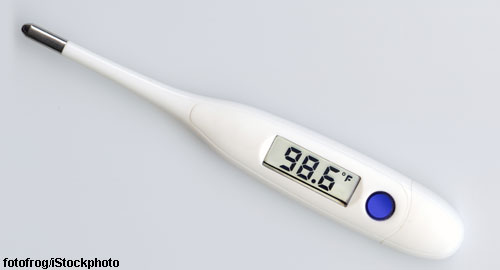 Like many other physicians, Jonathan S. Hausmann, MD, a pediatric and adult rheumatologist at Boston Children’s Hospital and Beth Israel Deaconess Medical Center, both in Boston, finds that determining a fever’s underlying cause can be challenging. Patients may develop fevers for many reasons, including infection, malignancy or an underlying rheumatic condition, such as lupus, rheumatoid arthritis or vasculitis.
Like many other physicians, Jonathan S. Hausmann, MD, a pediatric and adult rheumatologist at Boston Children’s Hospital and Beth Israel Deaconess Medical Center, both in Boston, finds that determining a fever’s underlying cause can be challenging. Patients may develop fevers for many reasons, including infection, malignancy or an underlying rheumatic condition, such as lupus, rheumatoid arthritis or vasculitis.
While reading the medical literature to identify better ways of using fever for diagnosis, Dr. Hausmann was surprised to find large gaps in the basic understanding of temperatures in the human body. For example, the notion that a normal body temperature is 98.6° F and a fever is 100.4° F was derived from a single study performed in the 1860s using an ancient thermometer.1 More current studies have attempted to replicate this study and found that average body temperatures are actually lower. However, these studies were also small and did not include diverse populations.
“Improved understanding of temperature is important because physicians often decide whether or not to admit a patient to the hospital, or how to treat them, based solely on a patient’s temperature,” Dr. Hausmann says.
To improve the understanding of body temperatures in health and disease, Dr. Hausmann is attempting to replicate the original fever study, while leveraging modern technology and social media in a project called Feverprints.
Research Begins
To conduct his study, Dr. Hausmann used Apple’s research platform, ResearchKit, to create an iPhone app in conjunction with the Innovation and Digital Health Accelerator team at Boston Children’s Hospital, which is sponsoring the study along with Beth Israel Deaconess Medical Center. The app became available in April 2016. Any adult or child—whether they are healthy or have a chronic condition—can participate in the study. Unlike traditional studies in which physicians decide who can participate, patients are empowered to enroll themselves in the study.
Feverprints has several goals—beginning with obtaining a better understanding of what normal body temperatures are in different segments of the population at different times of the day. He also wants to obtain what he calls a feverprint (like a fingerprint) of various febrile illnesses to help diagnose patients solely on their illness’ fever pattern. He thinks the pattern of fevers in patients with different conditions may vary, and that he may be able to identify and use these fever patterns for rapid, accurate diagnosis and to provide more timely treatment.


